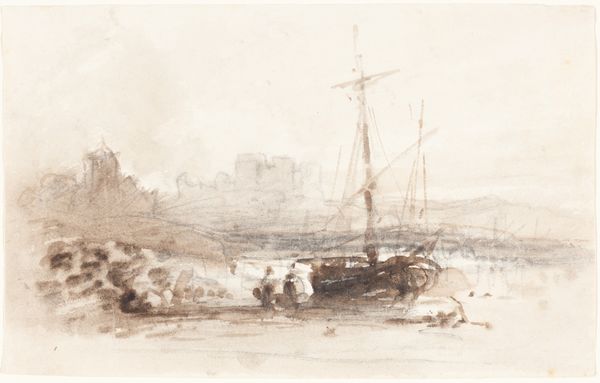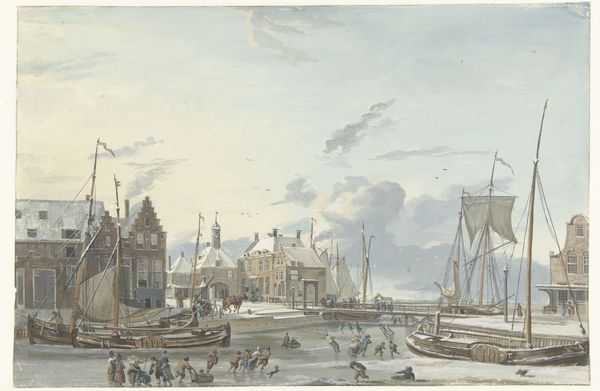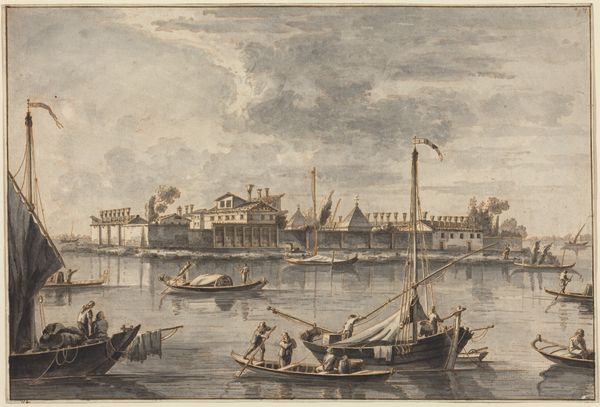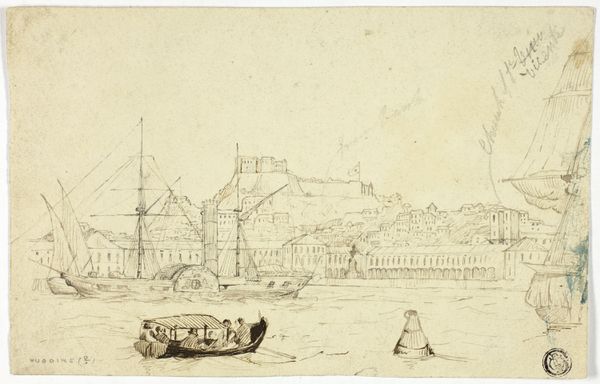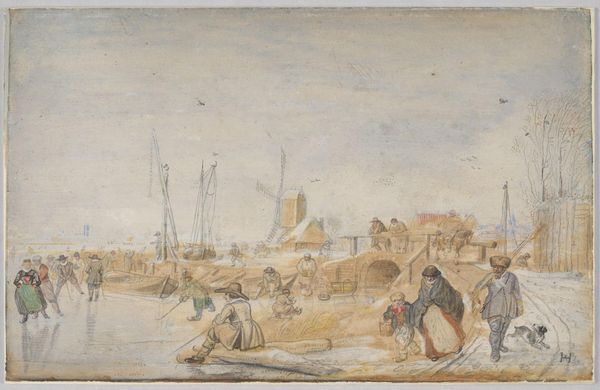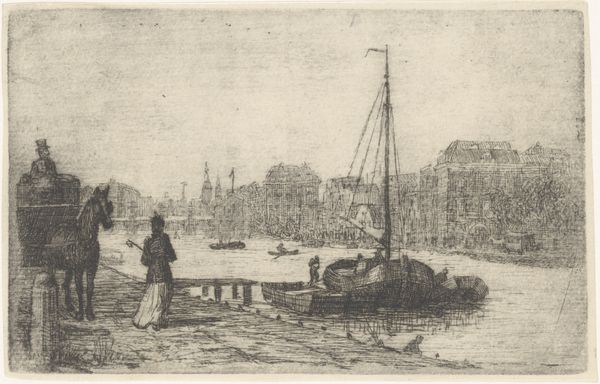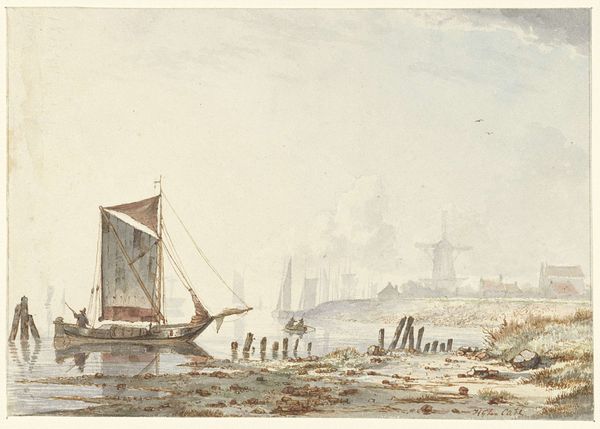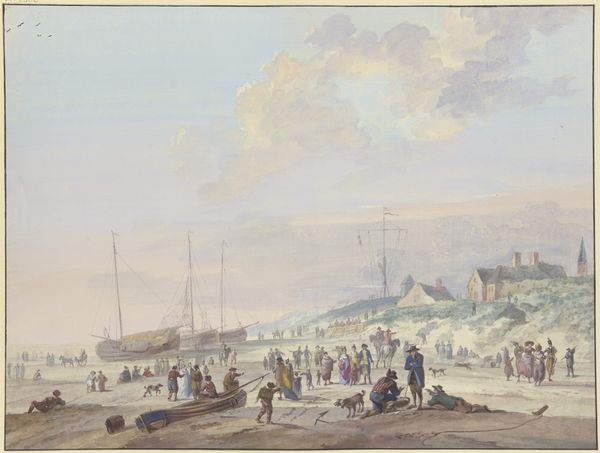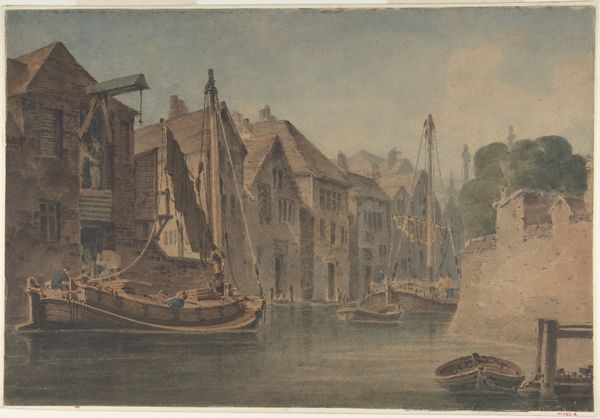
drawing, watercolor
#
drawing
#
landscape
#
watercolor
#
romanticism
#
cityscape
#
watercolor
#
realism
Dimensions: overall: 25.5 x 42.9 cm (10 1/16 x 16 7/8 in.)
Copyright: National Gallery of Art: CC0 1.0
Curator: Alfred Herbert's "The Harbor of St. Malo at Low Tide," dating to around 1850, immediately evokes a certain somberness for me. It is a city defined by fortifications, heavy stone, the mood feels both monumental and somewhat melancholic, would you agree? Editor: It’s certainly atmospheric. What stands out for me is how Herbert uses watercolor to depict the bustling port city, embedding it with rich historical narratives. A walled port in 19th century France carries a lot of colonial, class, and militaristic implications. Curator: Yes, those ramparts speak of protection but also division, the separation between those within the city's walls and those outside. Look how small the figures on the quays are compared to the buildings. It's a study in power, subtly illustrated. Editor: And the maritime theme itself – boats, harbours, figures busily trading– invokes centuries of visual representation connecting nation-states with international trade. Consider, for instance, how St. Malo, as a significant port city, became a locus for French colonial ambitions. What does this landscape conceal? Curator: That's precisely the tension that holds this piece. The architecture presents strength, power…a kind of stability. And yet, painted in watercolour, the scene has this sense of ephemerality to it. I'm interested in the interplay between the solid buildings, made of stone, and the water reflecting it all; impermanent, yet powerful in its own way. What does it suggest about national identity at this time? Editor: Absolutely, there is interplay of these solid symbols—fortified walls and city gates —with symbols of maritime trade and colonial expansion, especially significant considering St. Malo’s legacy as a base for privateers. You can’t divorce its picturesque appearance from that darker past and from the contemporary implications of empire. Even in a drawing of the mid-19th century we can see symbols that extend back through history and shape contemporary society. Curator: Indeed, understanding those visual legacies invites us to challenge our assumptions about progress and remember the power of collective identities formed by empire and industrialization. Thanks to the layers of cultural meaning, this deceptively gentle watercolor truly demands further investigation into its broader history. Editor: Precisely. It's a testament to the complexities of coastal spaces—sites of connection but also control and division, something Herbert's romantic yet realistically rendered painting holds within it.
Comments
No comments
Be the first to comment and join the conversation on the ultimate creative platform.
